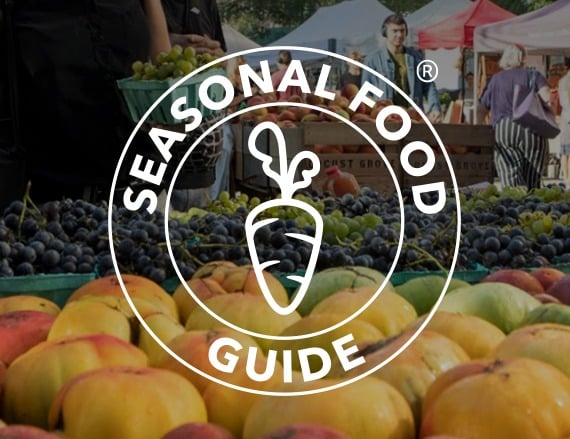Real Food Encyclopedia | Mango
Cultivated and revered in India since at least 2,000 BCE, the mango (Mangifera indica) originated somewhere in South Asia, most likely on the Indian Subcontinent, according to many historians.
For millennia, the fruit has been a vital cultural and religious symbol in India, appearing as a symbol of love in Vedic mythology. It was likely spread throughout Asia by Buddhist monks before traders took the fruit further afield. The Portuguese (from their outpost in Goa, on India’s west coast ) brought the fruit to Africa in the 16th century, and then on to Brazil in the 18th century, around the same time it arrived in Barbados, Jamaica and other parts of the West Indies. It would be another hundred years — probably late 1800s — before the fruit would debut in Florida, Hawai’i and southern California.
Today, the mango is grown in most frost- free climates, and is one of the world’s most eaten and most beloved fruits.
Did you know?
- Officially recognized as the national fruit of both India and Pakistan, it is known as the “king of fruit” in both countries, as well as being the national tree of Bangladesh.
- In 2006, the George W. Bush administration lifted a 17-year-long import ban on Indian mangoes. The first shipment, which included the famed Alphonso variety, made its official U.S. debut in the spring of 2007.
- In 2010, then Secretary of State Hillary Clinton tried to pave the way for imports of Pakistani mangoes. The ban was lifted, but the costs of shipping and irradiating (required by law to prevent the spread of pests and diseases), continue to make their import extremely tricky.
- Coral Gables, Florida is home to an International Mango Festival. It’s held at the world renowned Fairchild Tropical Botanic Gardens where more than 500 varieties of the fruit are grown.
- The fruit has been an important remedy in ayurvedic and other traditional schools of medicine. The bark, gum, leaves, pit and flower have been used for thousands of years to treat sundry ailments, from diarrhea to rheumatism, asthma to scabies.
What to look for when buying mangoes
Like the plum, cherry and olive, the mango is a drupe — a fleshy fruit with a thin skin and a pit (which contains the seed). Ranging in size from four ounces to two pounds, the fruit also varies in shape, from big and bulbous to slender and kidney shaped. They come in various shades of red, orange, yellow and green, and color is no indicator of ripeness.
When shopping, look for mangoes with leathery smooth skin, rather than wrinkled skin. Small black spots are okay, likely the result of sap leaking from the stem, but do make sure there’s nothing squishy or moldy. Take a pass on a mango that smells sour rather than sweet (mangoes do ferment as they age).
A ripe and ready-to-eat mango will yield to thumb pressure, and it should smell fragrant.
Sustainability of mangoes
Conventional mangoes rank low on the Environmental Working Group’s Shopper’s Guide to Pesticides in Produce, a list the group created to call out produce with the highest pesticide load. Their relatively low pesticide load earned mangoes a spot on the “Clean Fifteen” list; 78 percent of mango samples EWG tested contained no detectable pesticide residues.
But the commercial mango in American supermarkets is an import item, so it comes with a heavier carbon footprint associated with shipping. It’s also subject to USDA regulations requiring pest control, either through a hot water treatment or radiation. The FDA requires all irradiated mangoes to be labeled, though the process is harmless and doesn’t meaningfully change the fruit’s nutritional value.
Seasonality
The mango is a fruit of summer, regardless where it grows. In India, the fruit’s season is officially recognized as 100 days long, from late March through June. In south Florida , the local mango season typically runs from late May or early June until September.
Geography
The bulk of U.S. imports of the fruit come from Mexico, the balance coming from Peru, Ecuador, Brazil and Haiti. Dried mangoes also come from Thailand and the Philippines.
Eating mangoes
Storing
Do not refrigerate mangoes! Keep them at room temperature. If you only want to eat half, cut and score the remaining half, remove from the skin and store in an airtight container in the refrigerator, where it will keep for a few days.
Cooking
Many mango varieties are best enjoyed eaten fresh. Cutting and eating a juicy mango can be quite messy for the uninitiated, so it may be best to attempt over the sink. In Latin America, mangoes are often enjoyed with spicy-sweet condiments and powders like chamoy and tajin for added kick.
One of the easiest ways to use mangoes is by pureeing them. Blend with a banana, berries, plain yogurt and fresh mint (or any combination of these) to make a killer smoothie or lassi.
Mango salsa is another great way to use it; chop it up and mix with classic salsa ingredients like cilantro, red onion, lime juice and garlic. Serve it atop rice or your favorite grain, alongside grilled fish, shrimp or chicken, on a chip-and-dip platter or on a bed of greens.
Both green mangoes and ripe mangoes are pickled and used by cultures around the world as condiments (like the Indian achar), adding a puckery zing to otherwise rich dishes.
Preserving
You can purée peeled mango and freeze for later. The fruit is also often dried or pickled, which allows it to be stored for longer periods.
Nutrition and health
Mangoes are excellent sources of Vitamin C, with one fruit containing more than the recommended daily value. They are also good sources of Vitamin A and potassium.
Top photo by hanohiki/ Adobe Stock

